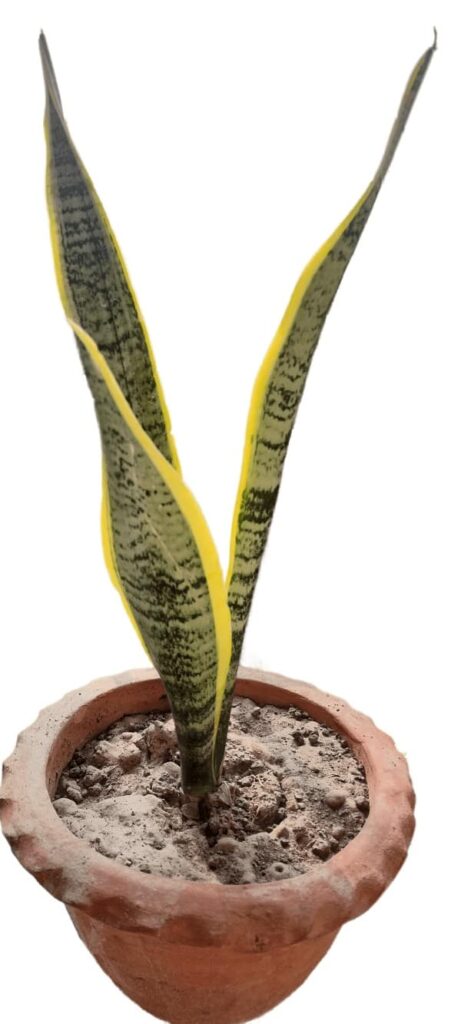How to Prune a Snake Plant – The Quick & Easy Way
Snake plants are an ideal choice for any home as they are low maintenance and easy to take care of. They are also known for their unique and stunning good looks, making them a great addition to any living space. So, if you want your snake plant to look its best, it’s time to arm yourself with a pair of pruners and give it a good trim. Trust us; it’s easier than you think! We’ll explain how to prune a snake plant in simple and easy steps.

The Sansevieria trifasciata, also known as the Snake Plant or Mother-in-Law’s Tongue, is a popular and hardy houseplant. Its thick fleshy leaves measuring 1-4 feet tall and up to 3 inches across, make it beautiful and easy to care for. The leaves have an exciting pattern resembling snake skin, giving it its common name. While Sansevieria prefers bright light, it can still thrive in low-light conditions and can even be grown outdoors in mild climates.
You can find different types of snake plants. Some like to grow sidewise. They may not be a maximum of 6-8 inches tall, but they will increase sidewise and are very tall. They can grow 4 to 12 inches per year. So you need to apply the right approach to the plant you have. Trimming a snake plant appropriately is vital if you want it to thrive. On the other hand, regular pruning will keep your snake plant healthy and ensure that it regenerates new leaves quickly.
When To Prune A Snake Plant
Before you start pruning your snake plant, it’s essential to understand when it’s best. Pruning your snake plant at the wrong time can damage it and ruin all the hard work you’ve put into it.
The best time to prune is during the growing season, so it’s best to do your pruning when new growth begins. Pruning snake plants is usually done in the spring and early summer. In late summer or fall, you can cut back older leaves that have fallen off the plant.
When pruning snake plants, make sure to remove all of the old leaves, roots, and dead branches. Next, cut new leaves down to the ground and cut off branches growing too high. Make sure to cut the new growth slightly below the old one so the plant will continue producing fresh leaves.
How To Prune A Snake Plant
Although Snake plants require occasional trimming, snake plants are typically simple to care for. Fortunately, if you have the proper knowledge, this task is easy.

So, if you want to learn how to prune your snake plant like a pro, here’s what you need to know.
The first step in pruning your snake plant is to identify the parts of the plant that need to be pruned. The most common areas to prune are the long, thin leaves.
Now that you’ve identified the sections that need to be pruned, it’s time to get down to work. You’ll need a pair of sharp, clean scissors to make clean, precise cuts. Start by cutting the long leaves back to their base, ensuring you don’t leave any jagged edges. Remove any
damaged leaves or dead limbs with a sharp knife – Cut the dead leaves from nearby branches, leaving healthy ones behind.
Once you’ve pruned the plant, it’s time to tidy up the area around it. Cut off any leaves that are dead or dying, and clean up any dirt or debris that may have gathered around the plant’s base. Doing so can keep the plant healthy and control pests and illnesses.
Finally, give your snake plant a good drink of water. Constantly water it thoroughly, but not too often – once a week is usually enough.
And that’s it! Pruning your snake plant doesn’t have to be a daunting task, and as long as you take your time and follow the steps outlined above, you should have a healthy and happy plant in no time. So go on, get out those scissors and give your snake plant the pruning it deserves.
Why Should You Prune Your Snake Plant?

There are a few reasons why you might need to prune your snake plant. Snake plants are slow-growing plants. They tolerate low light levels and average water but require a high-humidity environment to grow well indoors. But timely pruning is needed if you don’t regularly prune them; they’ll quickly outgrow your pot.
Pruning allows the plant to grow new branches and leaves, which in turn helps it reach its full potential. It also encourages proper growth and development, prevents disease, and keeps the surrounding environment clean. The leaves are dieback resistant, which means they can be pruned without losing shape or becoming detached. Below I try to give you some of the reasons Why you should prune Your Snake Plant.
Keep Your Snake Plant at a Healthy Size
Prune to maintain the size of your snake plant. Overgrown plants become slight and challenging to care for. They may not receive adequate water and nutrients, leading to foliage problems, stunted growth, and possible disease outbreaks.
Maintaining the size of your snake plant is essential for two reasons: first, snakes love to grow, and so does your snake plant; secondly, pruning helps the plant conserve energy and stay healthy. You will also be able to control the size of the plant – it won’t get too big or small.
Prune your snake plant every 2-3 months by cutting off a few stem tips. This will help keep it looking its best!
Damaged or dated leaves should be removed.
If the foliage on your snake plant is damaged or old, prune it back to healthy new growth. If you are cutting off damaged leaves, make sure that all of the tissue below and around the damage is cut away so that chlorosis (a problem caused by a shortage of oxygen) doesn’t set in.
Damaged leaves can also signify pests or diseases, so catching and treating the problem is vital before it becomes more severe.
Pests and Diseases
Snake plants are susceptible to pests and diseases, so pruning is essential to keep them healthy. Keep the plant structure clean by removing dead or diseased leaves, crowded branches, or long grass. To give the plant enough sunlight and airflow, trim any overgrown branches. When new growth starts in the early spring, prune.
Reduce snake plant’s height.
When snake plants grow too tall, they may not get enough light and won’t be as healthy. Shorten or prune the plant’s height to preserve its health and vigor. Cut off the tallest leaves at the soil line to reduce the plant’s overall size. Pruning snake plants the right way will help them look healthy and beautiful.
Reduce The Spread Of Your Snake Plant
Prune your snake plant regularly to reduce the spread of its roots and keep it healthy. Properly pruning your snake plant will also prolong its life and make it look prettier! During Spring or Fall, when new growth begins, prune them at this time.
To Increase Branching And Height
As you already understand, prune ing helps your plant size and height, but if you want a tall and beautiful snake plant to leave that you do not yet get, pruning helps you get so.
Prune snake plants periodically to encourage branching and height. When new leaves form, they will grow towards the light source – pruning helps direct this growth in the desired direction. This also improves water absorption and prevents foliage from shading other plants below it. Snakes love sunlight, so pruning your snake plant will help it to look its best!
For Propagation
You can also prune your snake plant to Propagat’s new plant. After pruning, You can take cuttings of healthy leaves and place them in the sand. It will take two to three months to get a new plant from that cutting.
FAQs
How Much Should I Trim Off My Snake Plants?

The amount of trimming you should do to your snake plants depends on several factors, including the size of the plant, its age, and the desired look. Generally, it would be best to trim off no more than a quarter of the plant in any session. If your plant is huge, you may need to do multiple trimmings over an extended period. Be sure to leave enough foliage for the plant to recover, as over-trimming can harm its health.
How Often Should I Trim My Snake Plants?
Snake plants should be trimmed once or twice a year or when the leaves become too long or unruly. When cutting the leaves of snake plants, do so carefully with scissors, and avoid leaving any jagged edges. After cutting, give the plant good watering.
If you notice any signs of distress or decline in growth, such as wilting leaves or browning tips, it is advised that you can trim and remove any such leave.
Are there any risks associated with trimming my snake plant?
Yes, there is a risk of damaging the plant or leaving it vulnerable to disease if you over-trim it. It is essential only to remove the old, damaged or dead leaves and be very careful when trimming to avoid damaging the plant. Don’t cut off the newly grown or healthy leaf.
What kind of care should I provide after pruning a snake plant?
After pruning a snake plant, keep the soil moist but not soggy. Provide light watering when needed, and make sure to provide good drainage. For optimum growth, put your plant in a bright area with indirect light. Make sure the leaves are free of any bugs or diseases by inspecting them. Provide the snake plant with a balanced fertilizer every few months to keep it healthy.
Lastly, use a fungicide and insecticide to prevent pests or diseases from affecting your plant.
What equipment is best for pruning a snake plant?
For pruning your Snake Plant, you should use sharp, clean pruning shears or scissors. Make sure to clean and disinfect the blades of the pruning tools before and after pruning to prevent the spread of disease. For additional hand protection, while pruning, you might want to wear a pair of gardening gloves.
Conclusion
Pruning a snake plant is simply about maintaining its health and giving it enough space to grow.
With this knowledge, you can confidently prune your snake plant. A snake plant can be kept healthy and bright by being pruned correctly. By following the steps on how to prune a snake plant outlined above, you can ensure that your plant will be well taken care of and enjoy many years of growth and beauty. With regular pruning and maintenance, your snake plant will be a striking addition to your home or garden.






